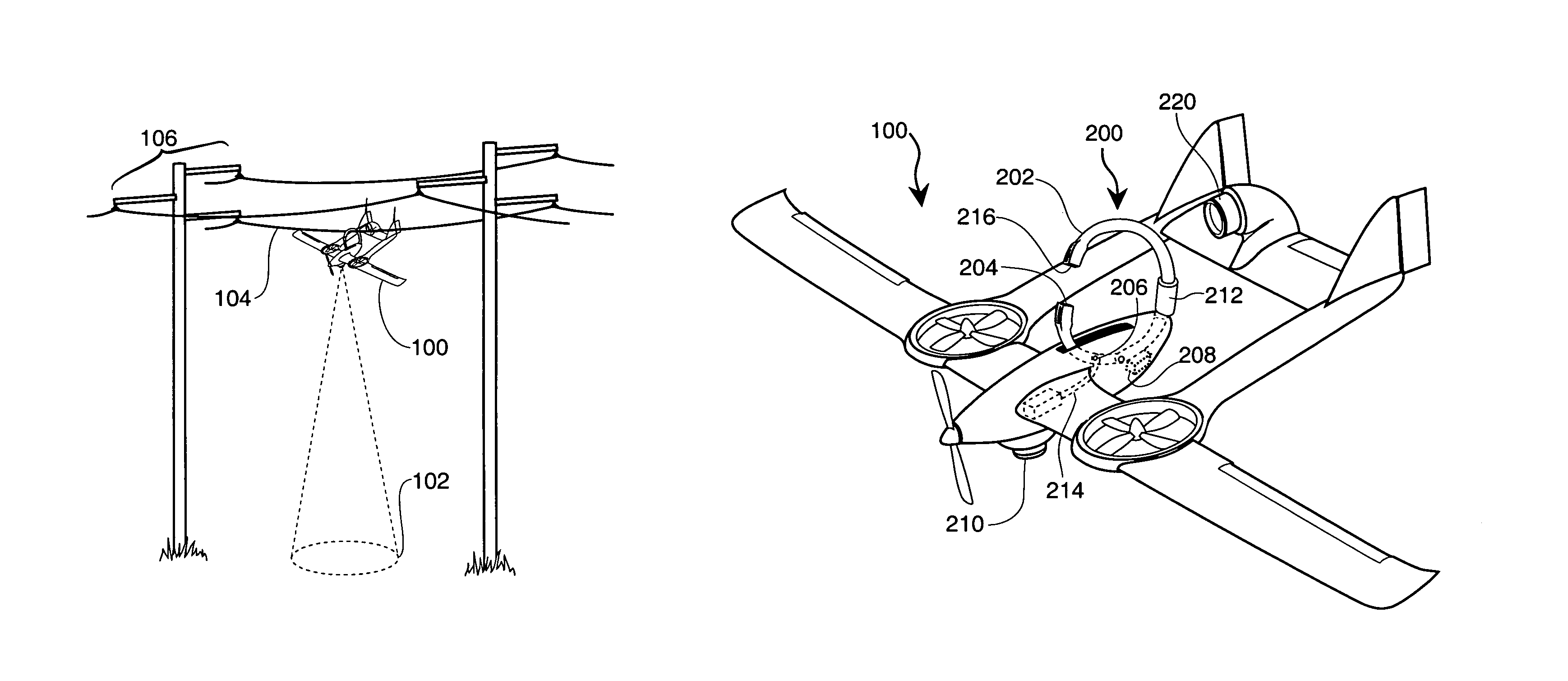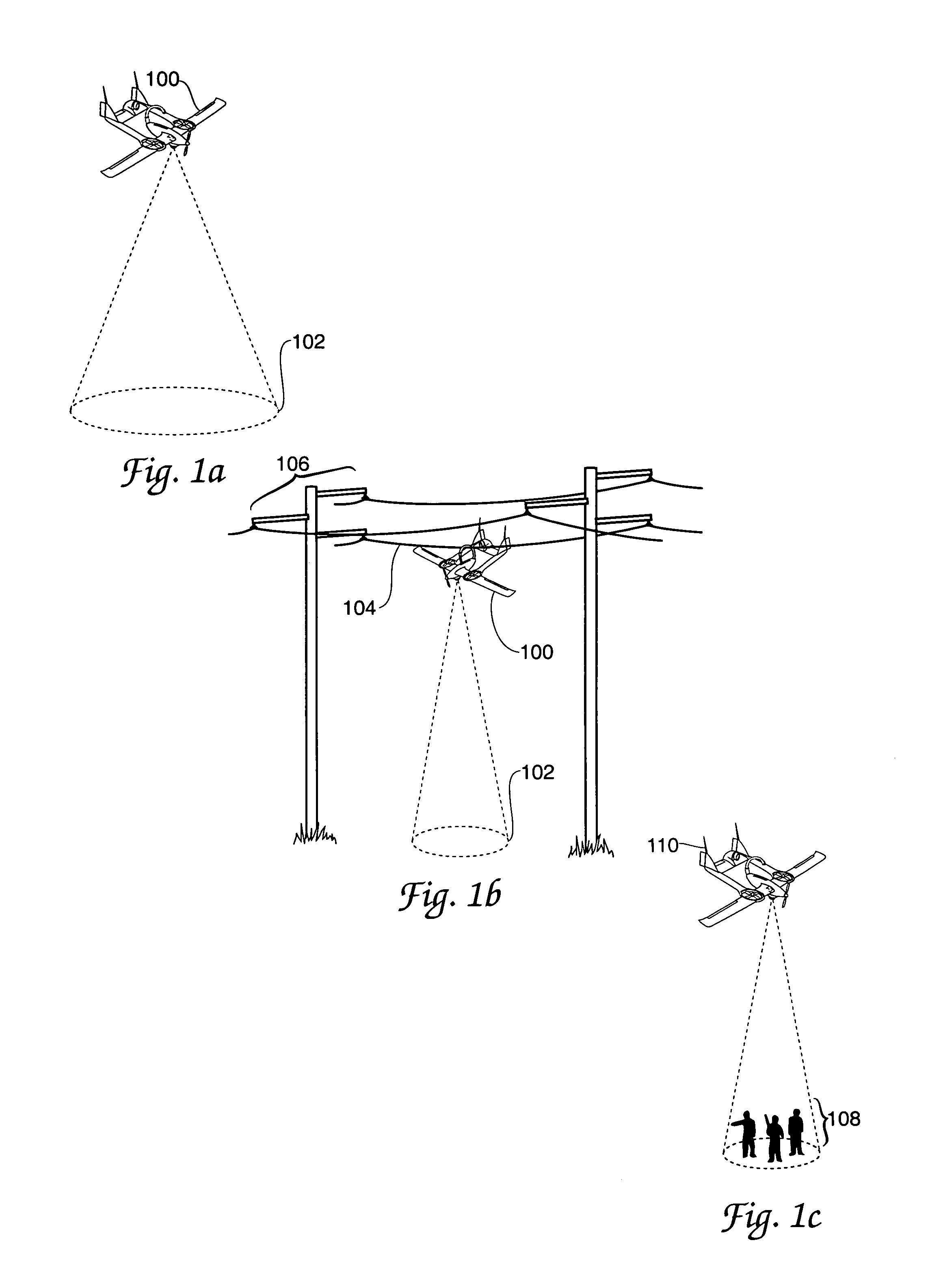Power line sentry charging
- Summary
- Abstract
- Description
- Claims
- Application Information
AI Technical Summary
Benefits of technology
Problems solved by technology
Method used
Image
Examples
Embodiment Construction
[0035]A key concept to the present invention is that “Numerous overhead power transmission lines that frequent most urban areas may be utilized by silent unmanned aerial vehicles to inductively recharge themselves while perched”. Theoretically these “power line-rechargeable” silent unmanned aerial vehicle units should be able to operate out in the urban field for an indefinite amount of time (i.e., 24 / 7 / 365 capability) with very infrequent “return-to-base” cycles being required. A typical urban military operation may for example involve launching swarms of present invention silent unmanned aerial vehicles weeks or even months before troops arrive to seek-out and terminate various combatants. For example, Special Operations troops may pre-program these vehicles to fly to local power lines near the urban areas of interest. If the duration of flight exhausts the battery power, then the silent unmanned aerial vehicles may simply locate the nearest power line for a temporary recharging. ...
PUM
 Login to View More
Login to View More Abstract
Description
Claims
Application Information
 Login to View More
Login to View More - R&D
- Intellectual Property
- Life Sciences
- Materials
- Tech Scout
- Unparalleled Data Quality
- Higher Quality Content
- 60% Fewer Hallucinations
Browse by: Latest US Patents, China's latest patents, Technical Efficacy Thesaurus, Application Domain, Technology Topic, Popular Technical Reports.
© 2025 PatSnap. All rights reserved.Legal|Privacy policy|Modern Slavery Act Transparency Statement|Sitemap|About US| Contact US: help@patsnap.com



